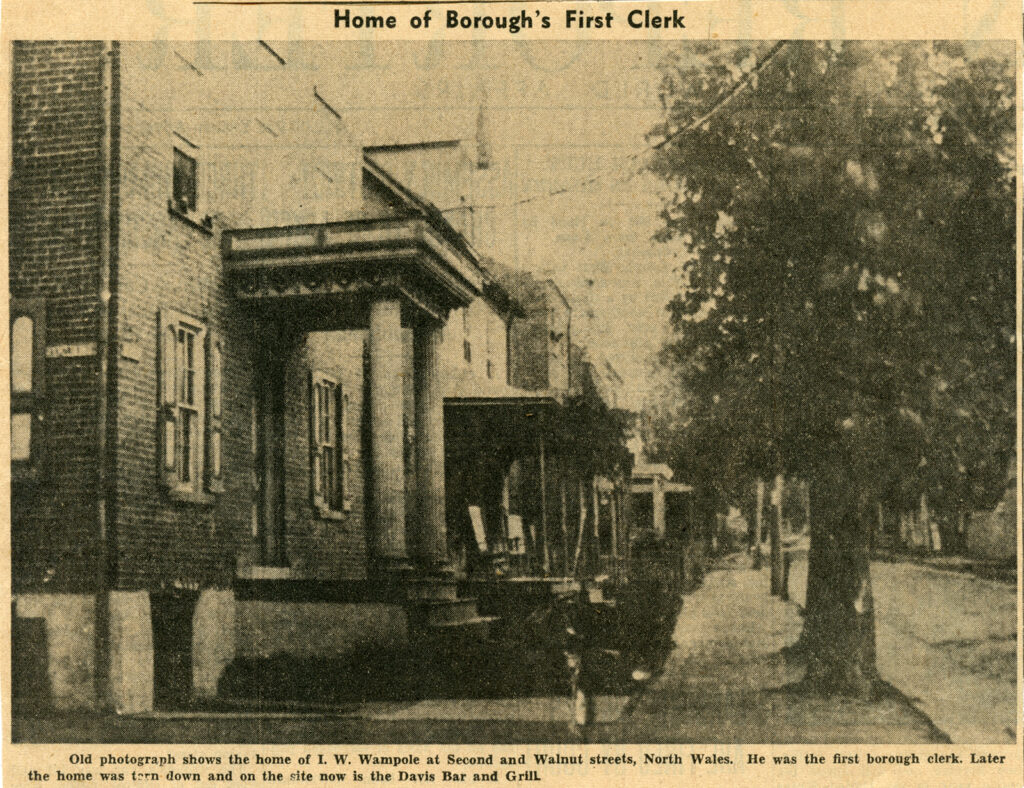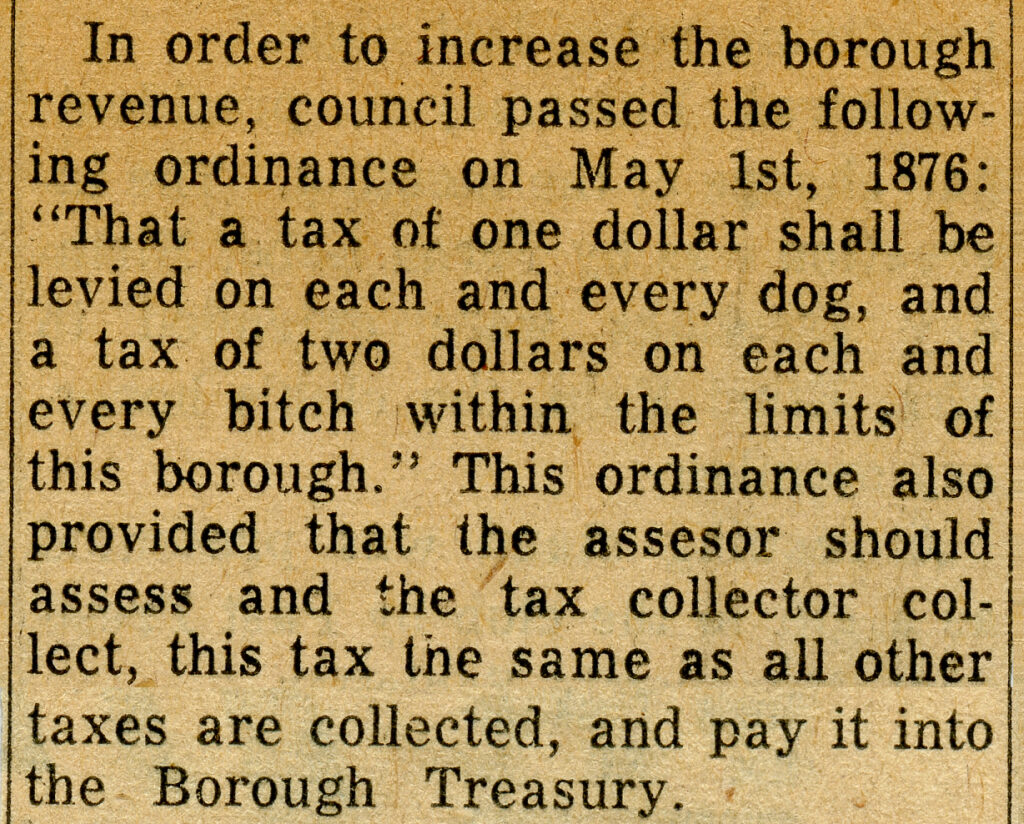The results of the desire to quench ones thirst, with something other than water, aroused the ire of the Borough Council. At the meeting in April 1872 it was unanimously resolved, “That all persons hereafter found intoxicated, or under the influence of liquor within the Borough of North Wales, be arrested and fined in the sum of $2, to which the constable shall be entitled for his service in attending to the lockup in the lodging of stragglers and criminals, etc.” [Two dollars in 1872 is roughly equivalent to $50 today.]
In October of 1872 the street commissioner was instructed to notify persons having trees near street lamps to keep the trees trimmed so as not to obstruct the ray of the light from such lamps on to the pavements.
Many years ago it was the custom for every community to have a local pump and well containing drinking water for both humans and animals. Such a pump and well was located on Lumber street, which runs between Main street and Second street along the Peoples Savings and Loan Association [in 2024 The Green Fork], and on May 7, 1873, it was resolved, “That the pump in the well on Lumber street, near Harley’s store, be repaired or replaced by a new one and the well covered with a good plank floor.”

At the December meeting in 1873, the meeting place of Council was changed from the office of I. W. Wampole to the office of the North Penn Fire Insurance Company, for which the council paid a rental of ten dollars per year.
Between the April and May meetings of 1874, an election was held at which the following were elected: Burgess, Samuel H. Shearer; Councilmen, Jacob H. Leister, Henry B. Mull, David Richards, David Baker (local undertaker and carpenter), Sylvester Bright and Evan B. Kepler. At the reorganization meeting of this newly elected council, I. W. Wampole was replaced as borough clerk by A. W. Dettra. It might be interesting to note that at this time the borough council was completely democratic.
December 2, 1874, on motion the President was ordered to inform the Court that the Borough of Lansdale had not provided a lockup, as is required by law, and that our lockup was over-crowded in consequence thereof.
March 3, 1875, on motion, the president was instructed to collect $8.50 of Samuel W. Hendricks for the destruction of a lamp on Main street in front of the estate of Jonas D. Moyer. This was paid at the May meeting.
As a result of numerous street lamps being broken, council, on May 6th, passed the following ordinance: “That hereafter any damage done to the public lamps, or other property belonging to the borough, by any boy or boys; the parents, guardians, trustees or whosoever may have such boy or boys in charge, will be held responsible for all costs that may arise in repairing said damage in addition to a fine of $1 for such offense.”
During June, July and August of 1875 the lighting of the street lamps was dispensed with. Evidently this was done because of the long summer evenings.
In April 1876, council again desired to change their meeting place and accepted an offer of Abel K. Shearer to meet in his office for a rental of $1 for each meeting night, light and fuel included.

In order to increase the borough revenue, council passed the following ordinance on May 1st, 1876: “That a tax of one dollar shall be levied on each and every dog, and a tax of two dollars on each and every bitch within the limits of this borough.” This ordinance also provided that the assessor should assess, and the tax collector collect, this tax the same as all other taxes are collected, and pay it into the Borough Treasury.
Following the general election of 1877, the new council met and organized on April 2, 1877, at which time I. W. Wampole was reappointed clerk. At this meeting Abel K. Shearer again offered the council the use of his office in which to hold their meetings at one dollar per night, which was not accepted, and Council decided to again meet at the office of the clerk.
After having considerable trouble with the street lamps, the following report was made to council on May 7th 1877:
“The committee on lamps reports several in good condition, one broken and others requiring too much oil. The lamp lighter being present, having experimented with the lamps, reports that several, when filled, burn out in two evenings, while others with the same amount of oil burn six evenings, upon which a lively discussion ensued, and a motion made and seconded to dispense with lights for four months, which was not agreed to. The committee was then instructed to examine new lamps and if they find them to answer a good purpose and save oil and time to light them, as is claimed by the lamp lighter, to get more of the same kind to take the place of the old ones now in use.”
This post is sourced from a column entitled Early North Wales: Its History and Its People penned by long-time North Wales resident historian Leon T. Lewis. The article appeared in its original form in the September 15, 1959 issue of the North Penn Reporter
